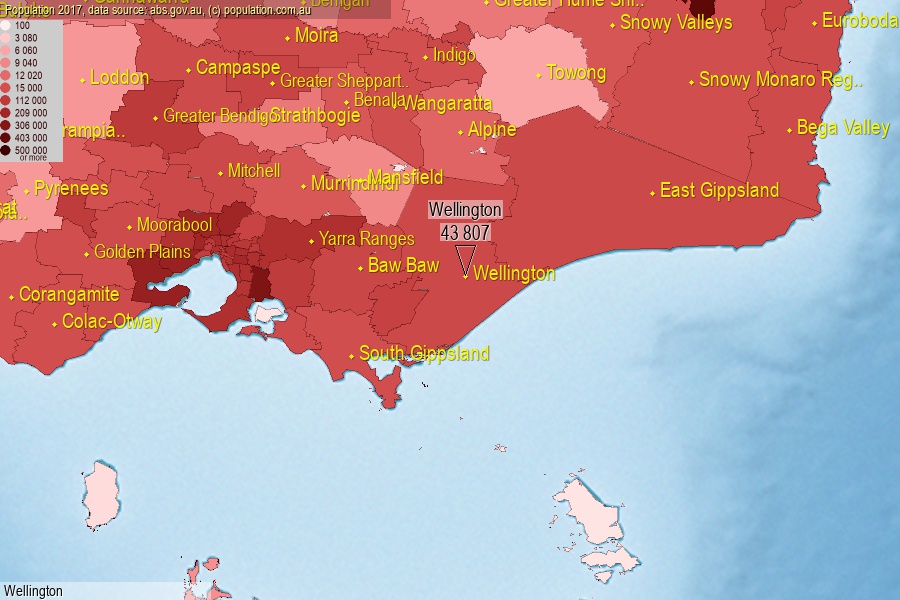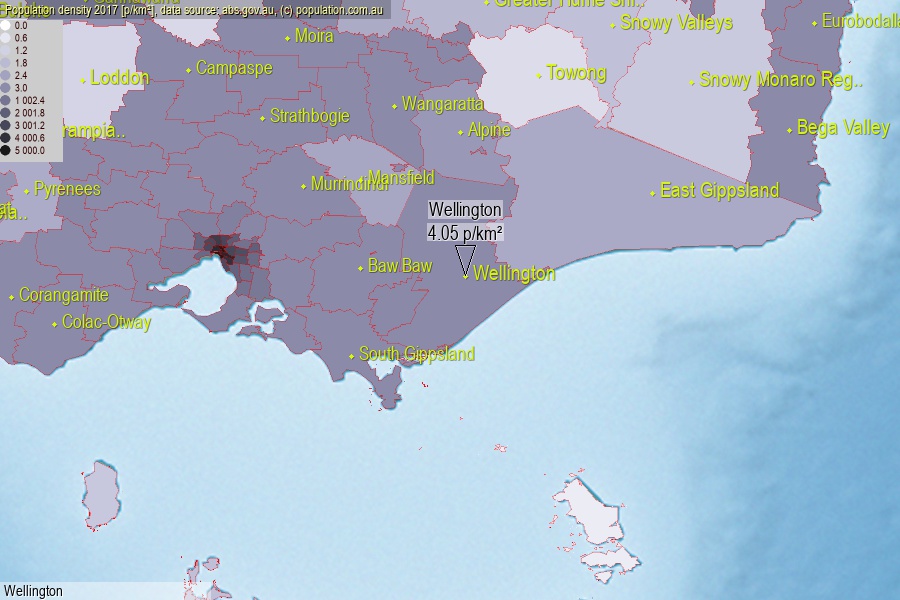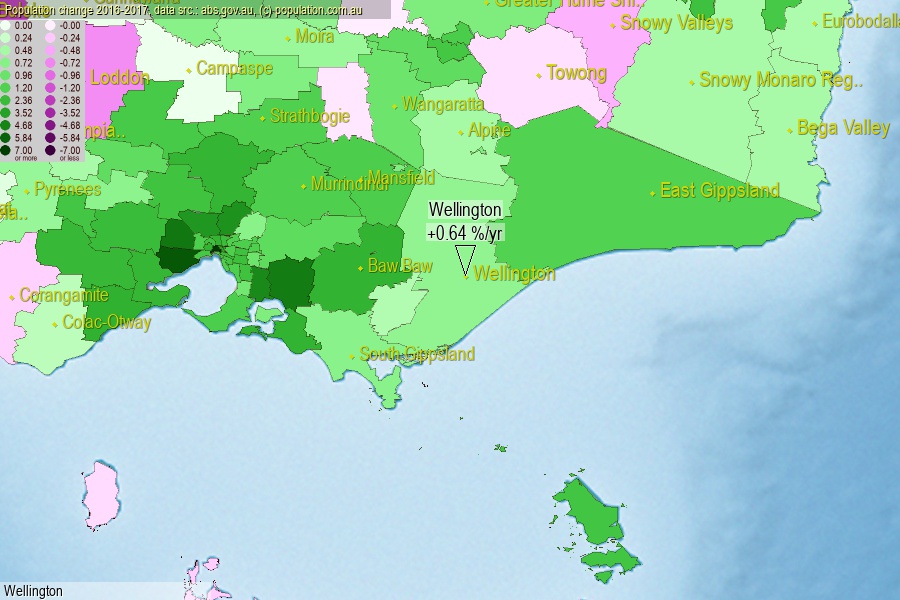 population.com.au
population.com.auLast official estimated population of Wellington Shire (as Local Government Area) was 43 807 people (on 2017-06-30)[2]. This was 0.18% of total Australian population and 0.681% of VIC population. Area of Wellington is 10 817.30 km², in this year population density was 4.05 p/km² . If population growth rate would be same as in period 2016-2017 (+0.64%/yr), Wellington population in 2025 would be 46 087. [0]



Click to enlarge. Wellington is located in the center of the images.
Population [people], population density [p./km²] and population change [%/year] [2]
[1996-2001] -0.34 %/Y
[2001-2002] -0.40 %/Y
[2002-2003] -0.34 %/Y
[2003-2004] -0.13 %/Y
[2004-2005] +0.06 %/Y
[2005-2006] +0.44 %/Y
[2006-2007] +0.53 %/Y
[2007-2008] +0.68 %/Y
[2008-2009] +0.81 %/Y
[2009-2010] +0.72 %/Y
[2010-2011] +0.63 %/Y
[2011-2012] +0.90 %/Y
[2012-2013] +0.65 %/Y
[2013-2014] +0.53 %/Y
[2014-2015] +0.52 %/Y
[2015-2016] +0.83 %/Y
[2016-2017] +0.64 %/Y
[0] Calculated with linear interpolation from officially estimated population
[1] Read more about LGA and Australian Statistical Geography Standard (ASGS) on abs.gov.au
[2] Population data from Australian Bureau of Statistics (Population and density: 2017; change: 2016-2017)
[3] Digital Boundaries: Australian Statistical Geography Standard (ASGS) 2016.